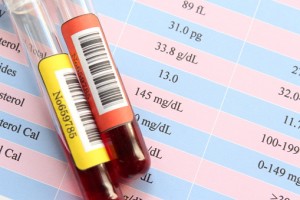Are Your Gains Muscle or Fat? Heres How To Measure Them
You’ve been putting in the effort at the gym. Every day you stand in front of the mirror and it seems as though you’re achieving success.
But how can you really be sure?
It’s important to track your progress from time to time to help ensure that whatever you’re doing with you workouts is really paying off.
Not sure where to start?
Let’s take a closer look at some of the best ways to measure your gains.
Skin Caliper Test
The first method to assess your gains is a simple skin caliper test. This is a cost-effective method that will help you get a rough estimation of your overall body fat percentage.
Tracking this over time in comparison with your body weight will help you discover whether you’re putting on lean muscle mass or whether body fat has been gained.
While it’s not 100% accurate, it’s a great way to gauge your overall progress.
DEXA Scan
The next way to measure your gains is with a DEXA scan. This stands for dual-energy X-ray absorptiometry and is currently the ‘gold standard’ for assessing body composition. You’ll lay inside of a machine as it scans your entire body.
In addition to telling you what your overall body fat percentage is, this test will also help you identify how much muscle mass you have in all areas of your body such as your arms, your legs, and your core region.
If you are going on a specific program to help develop your lower body for instance, this test will tell you very accurately how much progress is being made.
Additionally, the DEXA scan is also great for assessing bone density, so can indicate how high of a risk factor you may have for bone breaks or osteoporosis down the road.
1RM
If you’re looking for a way to assess progress while you’re in the gym, a 1-rep max (1RM) is where it’s at.
This test will have you lifting as much weight as you can handle for just one rep to determine what your maximum strength level is.
As 1RM tests are quite draining, you wouldn’t want to do this on a regular basis, however performing it once every few weeks or month can be an excellent indication if strength gains are being made.
And, if strength gains are being made and you’re using a higher calorie diet plan, this is a great indication lean muscle mass is also being built.
Body Part Measurements
Finally, the last way to measure your gains is through body part measurements. This is a simple technique so unlike the DEXA, which can be expensive and unavailable in certain areas, you can always take your own body part measurements.
To do so, you’ll simply wrap a tape measure around the part you want to measure, record the circumference and retake the same test at a later date.Then compare the results.
While this won’t indicate if you’re gaining fat or muscle mass, if you also notice your strength is going up at the same time, there’s a good chance at least some of the size gains are due to lean muscle.
So there you have the main ways to measure your gains. What’s your favorite method of recording your progress?
Shannon Clark holds a degree in Exercise Science from the University of Alberta, where she specialized in Sports Performance and Psychology. In addition to her degree, she is an AFLCA certified personal trainer and has been working in the field for over 12 years now. She is a regular contributor to Bodybuilding.com and has also been named 'Writer Of The Year' two times running. She's also contributed well over 400 articles to a variety of different websites dedicated towards muscle building and athletic performance.
-
Maintaining Your Weight Loss: 3 Tips
Its common knowledge that most people who lose weight end up gainin
-
Can coconut oil help me lose weight?
The few small studies that have looked at coconut oil for weight loss
-
Smart Strategies To Lose Weight And Be Fit
Weight loss can be a frustrating activity. Often, you find yours
-
7 Ways To Simplify Exercise (So You’ll Actually Do It!)
Exercise can be very beneficial for you. While y
-
The Best 5 Natural Fat Loss Supplements
With the enormity of the amount of weight loss supplements out there o
-
Fast Weight Loss Program Without Pills
Each day, millions of people struggle with the challenges of weight lo
- DON'T MISS
- How to Drop Pregnancy Weight
- Should You Bother with Fasted Cardio?
- 5 Dangerous Medical Myths
- When a switch to public transport could help with weight loss
- Are There Turmeric Benefits that May Help You Lose Fat?
- Why You Should Read The Weight Loss Game: How To Lose And Win
- If You Have Been Having Difficulties Losing Weight You May Possibly Want To Take A Look At The Natural Thyroid Diet
- Information On Workout
- Bariatric Surgery Costs
- Top Diet Tips For This Holiday Season




